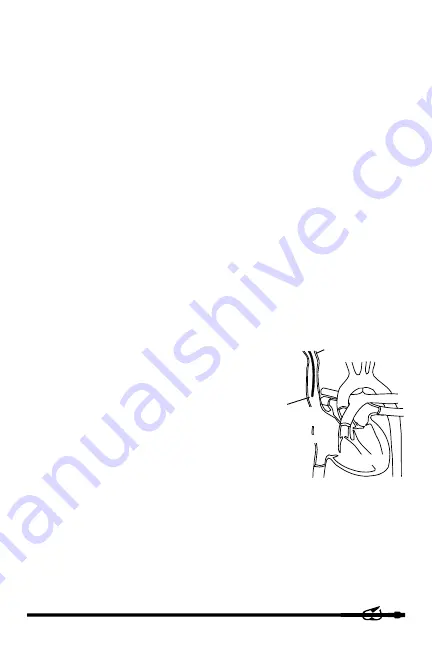
Bard Access Systems, Inc.
11
g. Estimate the catheter length required for tip placement at the junction
of the superior vena cava and right atrium by placing the catheter on
the chest along the venous path to the right atrium.
Section C: Cutdown Technique
1. Surgically isolate the desired vessel through a small skin incision.
Note:
The external jugular vein, the cephalic vein at the
deltopectoral groove, and the axillary subclavian vein are the
most common vessels used for catheter insertion. It may be
necessary to use the internal jugular vein for insertion of larger
catheters.
2. Refer to section B for catheter measurement and tunneling
procedure.
3. Insert the catheter through a small venotomy into the isolated vein
and advance to desired position in vessel.
4. Verify catheter tip location
radiographically. The preferred
location of the catheter tip is at the
junction of the superior vena cava
and the right atrium.
Warning:
Avoid positioning the
catheter tip in the right atrium.
5. Unclamp catheter and draw blood
through the lumen(s) of the catheter
to insure patency after placement
is complete, but before closing the skin at the venipuncture site. If
catheter is not patent, adjust catheter at curvature point to relieve
possible restriction. Irrigate catheter lumen(s) with 10 mL of normal
saline to clear catheter of blood. Instill sterile heparinized saline per
lumen to create a heparin lock. Clamp catheter.
Superior
Vena Cava
Ventricle
Atrium
Catheter Tip
Placement




























